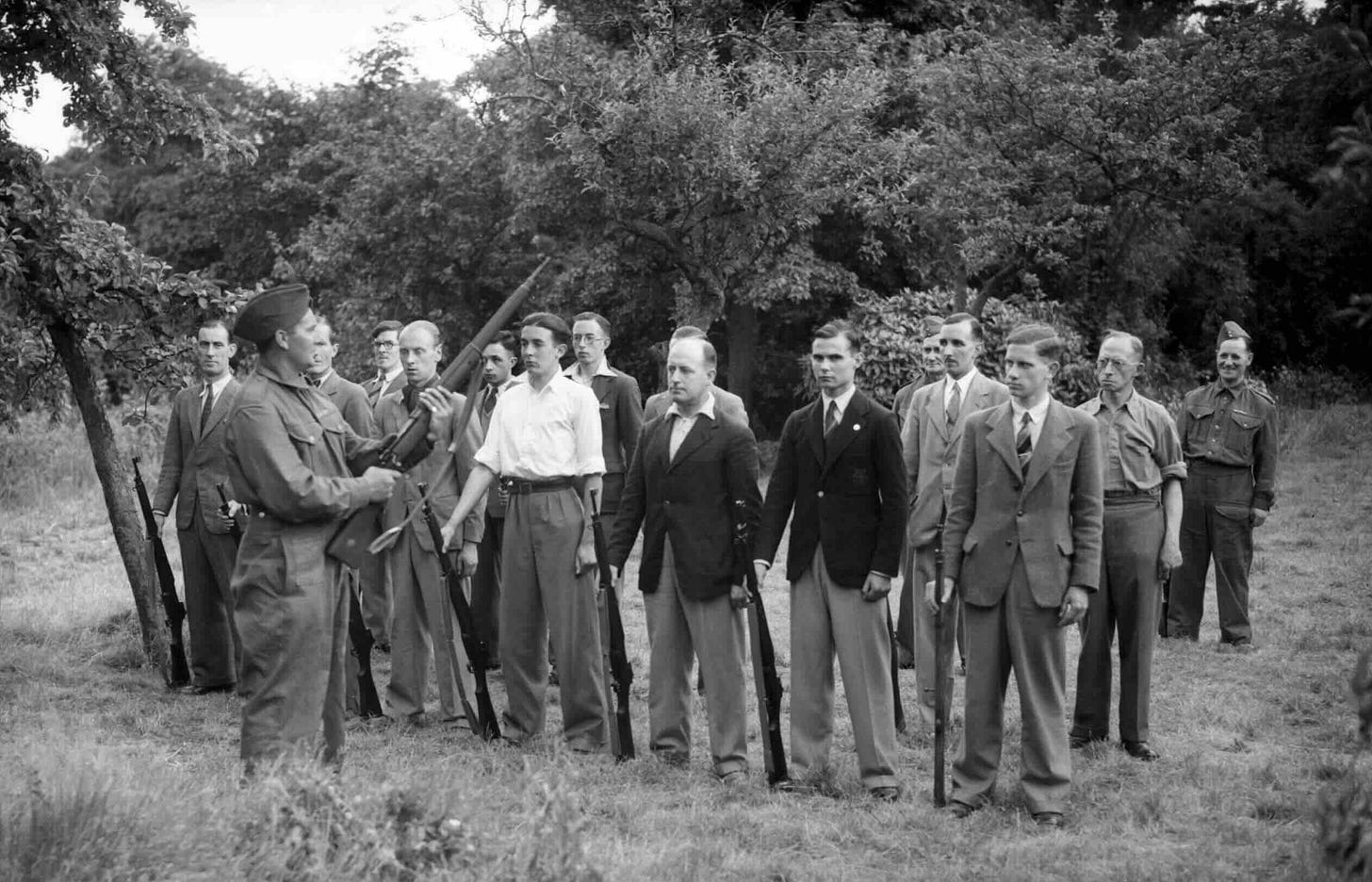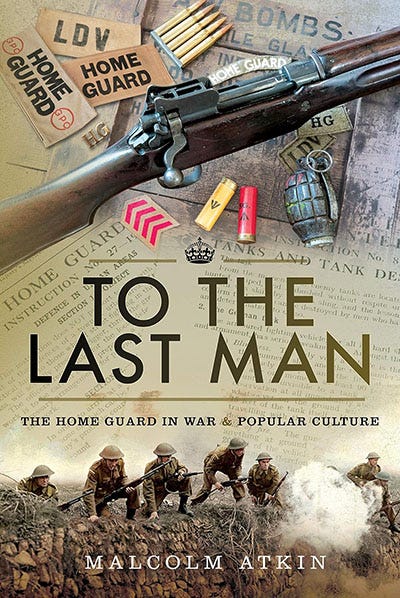Forming the Home Guard
An excerpt from 'To The Last Man - The Home Guard in War and Popular Culture'

The Home Guard, established in the summer of 1940, has a prominent role in British culture, not least after the popular television comedy series ‘Dad’s Army’. However, it had a difficult gestation. In part, it was a response to popular demand and a means for the authorities to channel public enthusiasm to defend their country. Some in government recognised that a volunteer force could play a valuable role in freeing regular troops from static guarding duties. But there were different views on whether a volunteer force should be any more than an armed police force or whether it could play an aggressive combat role.
To the Last Man: The Home Guard in War & Popular Culture examines the arguments made at the time and how the Home Guard evolved into a significant military force, strongly influenced by the many former soldiers in its ranks. It also looks at the many ways the Home Guard has been portrayed in popular culture over the years.
The following excerpt traces the history behind the formation of the Home Guard:
Britain had a long history of volunteer militias ready to counter both foreign invasion and civil disorder. What distinguished the mobilization of the Local Defence Volunteers (LDV) in May 1940 was not only the scale and enthusiasm of the volunteers but also the government’s lack of a clear understanding of their role. At the start of the First World War a spontaneous movement to create volunteer ‘town guards’ had sprung up across the country, coming together as the Volunteer Training Corps (VTC).
The government initially tried to suppress the movement as a distraction from securing voluntary enlistment to the armed forces and refused to provide uniforms or weapons (which had to be provided by the volunteers themselves) but in 1916 the organization was recognized as the Volunteer Force, under the Territorial Force Association (predecessor of the Territorial Army Association). Although training explicitly for guerrilla warfare on the model of the Boer commandos, it was mainly used to guard vulnerable points, including armaments factories, then to man the new anti-aircraft batteries, and in the crisis of spring 1918 volunteers from across the country were mobilized for full-time service to help defend the east coast. With some exceptions (to guard against possible Bolshevik revolution), the VTC was formally stood down in September 1919, the notification being announced by Winston Churchill (then Secretary of State for War).
Although the VTC was entirely male, it worked closely with the Women’s Volunteer Reserve (WVR), frequently assisting them with weapons training. Neither organization fitted easily into the popular narrative of the conduct of the First World War that the government tried to encourage in the post-war years; both organizations have now almost completely disappeared from popular history. The debt owed by the Home Guard to the earlier VTC was clearer in 1940 than it is to a modern audience and some young volunteers served again in the Home Guard of 1940. In Herefordshire and Worcestershire the ages of such double volunteers in 1940 ranged from 39 to 63 years.
Two visionaries from opposite ends of the political spectrum had unsuccessfully argued in 1939 for the creation of a much larger Home Guard. Tom Win- tringham, a founder member of the Communist Party of Great Britain (CPGB) and former editor of the Daily Worker, had been arrested in 1925 for seditious libel and incitement to mutiny. In 1936 he had been a pioneer of the concept of the International Brigades in Spain and was an instructor and then briefly commander of the British Battalion. Although expelled from the CPGB in 1938, Wintringham remained a confirmed Marxist and differed only tactically in believing it was necessary to work with the British government to defeat fascism, rather than waiting for a future workers’ revolution.
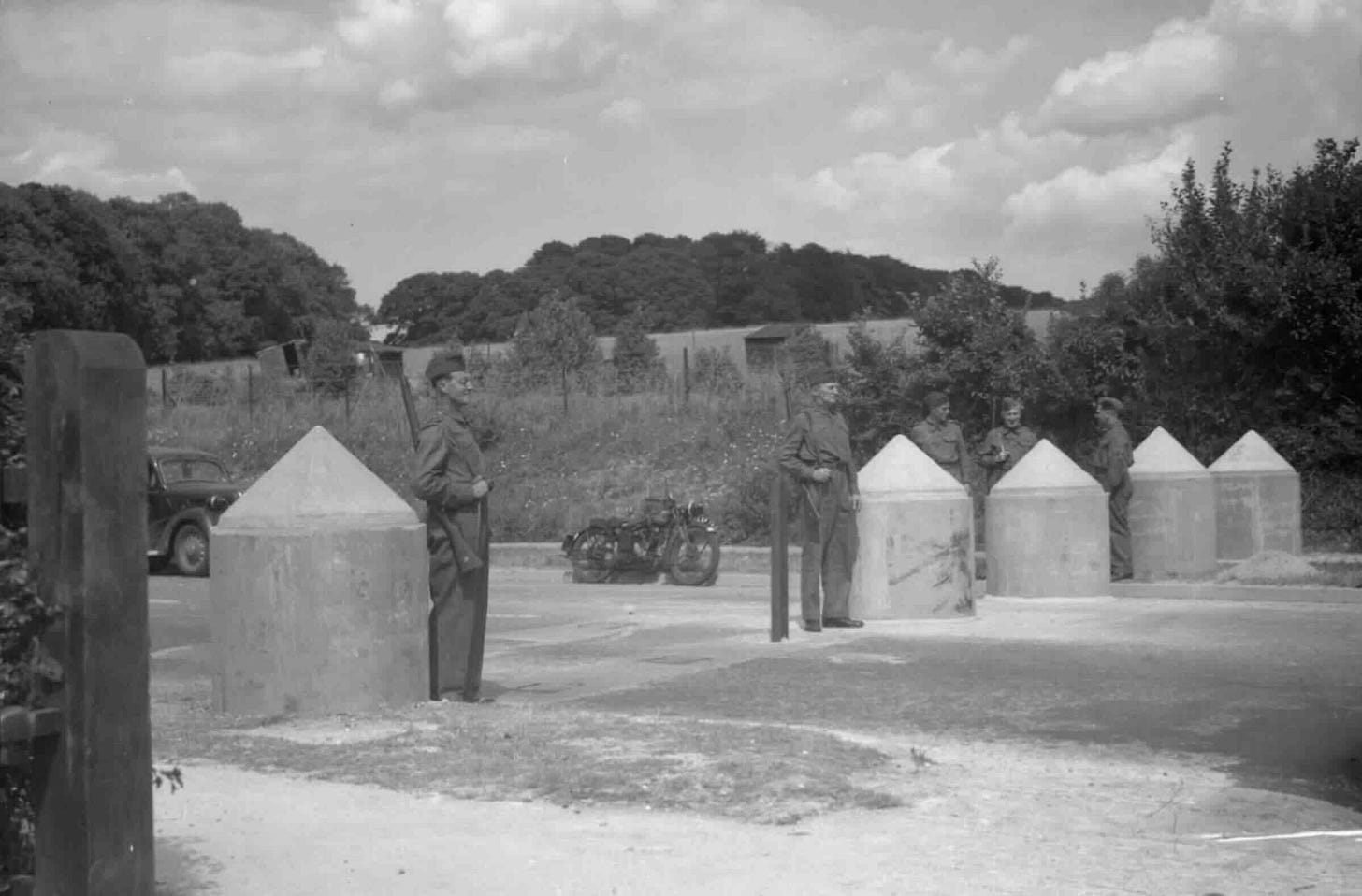
In April 1939 Tom Wintringham called for twelve divisions: formed in the same way as the International Brigades, by voluntary enlistment from among ex-servicemen and youths. The number of men required is, perhaps, 100,000, which is a smaller number than that of the volunteers who would, in fact, clamour for arms tomorrow if the bombing of our cities began today. Wintringham’s proposal was ignored, not least because it was part of his wider proposals to make the army more democratic.
In October 1939 the Conservative First Lord of the Admiralty, Winston Churchill, who had been closely connected with the final days of the Volunteer Training Corps, took up Wintringham’s theme, sending a memo to the Home Secretary: Wily do we not form a Home Guard of half a million men over 40 (if they like to volunteer) and put our elderly stars at the head and in the structure of these new formations? ... If uniforms are lacking a brassard would suffice, and I am assured there are plenty of rifles at any rate.
Churchill’s vision was for an expansion of the Home Defence Battalions, with First World War veterans taking over home duties, allowing younger soldiers to go on active service overseas. Equally rebuffed, Churchill then decided to let the matter drop.
Until May 1940 there was an unreal ‘phoney war’ atmosphere, with the Chamberlain government dithering on how firmly to press the war effort, believing that the Nazi state was brittle and would collapse of its own accord’ with Chamberlain confidently maintaining that Hitler had ‘missed the bus’.
As in 1914, the first practical steps were taken as a grass roots movement of raw patriotism, tinged with frustration at the government’s complacency. The river-borne Upper Thames Patrol was formed in September 1939 by Sir Ralph Glyn, MP for Abingdon, in conjunction with the Thames Conservancy and War Office to patrol the Thames and its banks from Teddington to Lechlade. At its height, the UTP had up to 6,000 members, mainly Thames water-men, and it was also the first unit to recruit women.
In March 1940 the ‘Essex Volunteer Army Force’ was formed, based around the Romford and Hornchurch troop of the Legion of Frontiersmen and comprising around 400 men. The Daily Mirror described it as die ‘vanguard of Britain’s part-time army’ .
At the same time Lady Helene Gleichen organized the eighty male employees and tenants on her estate near Ross on Wye into the ‘Much Marcle Watchers’ . She wrote to the HQ of the Shropshire Light Infantry requesting that it give her 80 rifles with ammunition, adding, ‘I could do with some machine guns, too, if you have any to spare.’
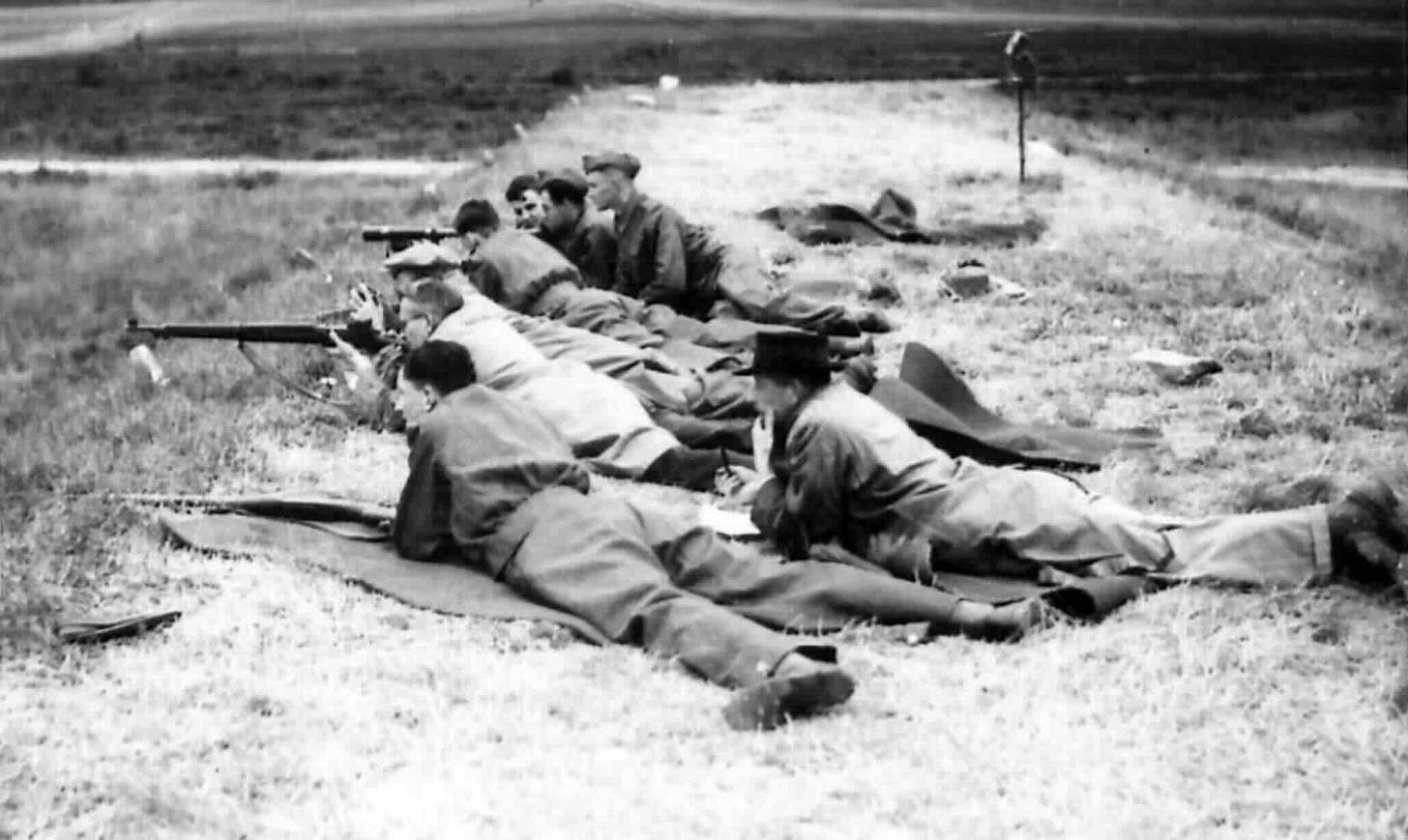
In April Lord Kemsley offered to fund the creation of rifle clubs as the core of a new defence force and there were widespread demands in the popular press to create a new volunteer defence force; MPs began to be inundated with letters from constituents demanding action and Regional Commands with offers of help. E.R. Lansdale of Petersfinger near Salisbury offered to be part of a body of householders, living on the outskirts of towns and whose properties had a good field of fire, who would be issued with rifles. He cited his military experience as a private in Giggleswick School OTC from 1920 to 1924.
Following the invasion of the Low Countries in May, paranoia intensified over the fear of German airborne landings and the existence of a ‘fifth column’ , bringing with it the risk of a mushrooming of vigilante groups who would be liable to be shot as francs-tireur (terrorists) under international law.
One such body was formed on 11 May in Cradley, near Halesowen in the West Midlands, where a unit to watch for German parachutists and saboteurs went on its first patrol on 13 May, the day before Eden’s broadcast announcing the new Local Defence Volunteers (LDV).
A government press release on Saturday, 11 May tried to dissuade civilians joining any fighting and the Ministry of Home Security was obliged to send out an urgent telegram on the night of 12 May, requesting confirmation of rumours that ‘bands of civilians were forming all over the country and arming themselves with shotguns etc for the purpose of detecting and dealing with German parachutists’.
...
[The Local Defence Volunteers were officially announced on 14th May but police stations were soon inundated with people attempting to register to join, and there continued to be confusion over its exact role for some weeks.]
...
With criticism mounting, Churchill believed the LDV needed rebranding. He first proposed the change of name to Home Guard on 26 June, but it was not finally confirmed until 22 July. The pithier title combined defending the local community and the wider nation, but Eden, the War Office and the Ministry of Information were not happy about the swift change of name and there were grumbles over the cost of issuing new armbands.
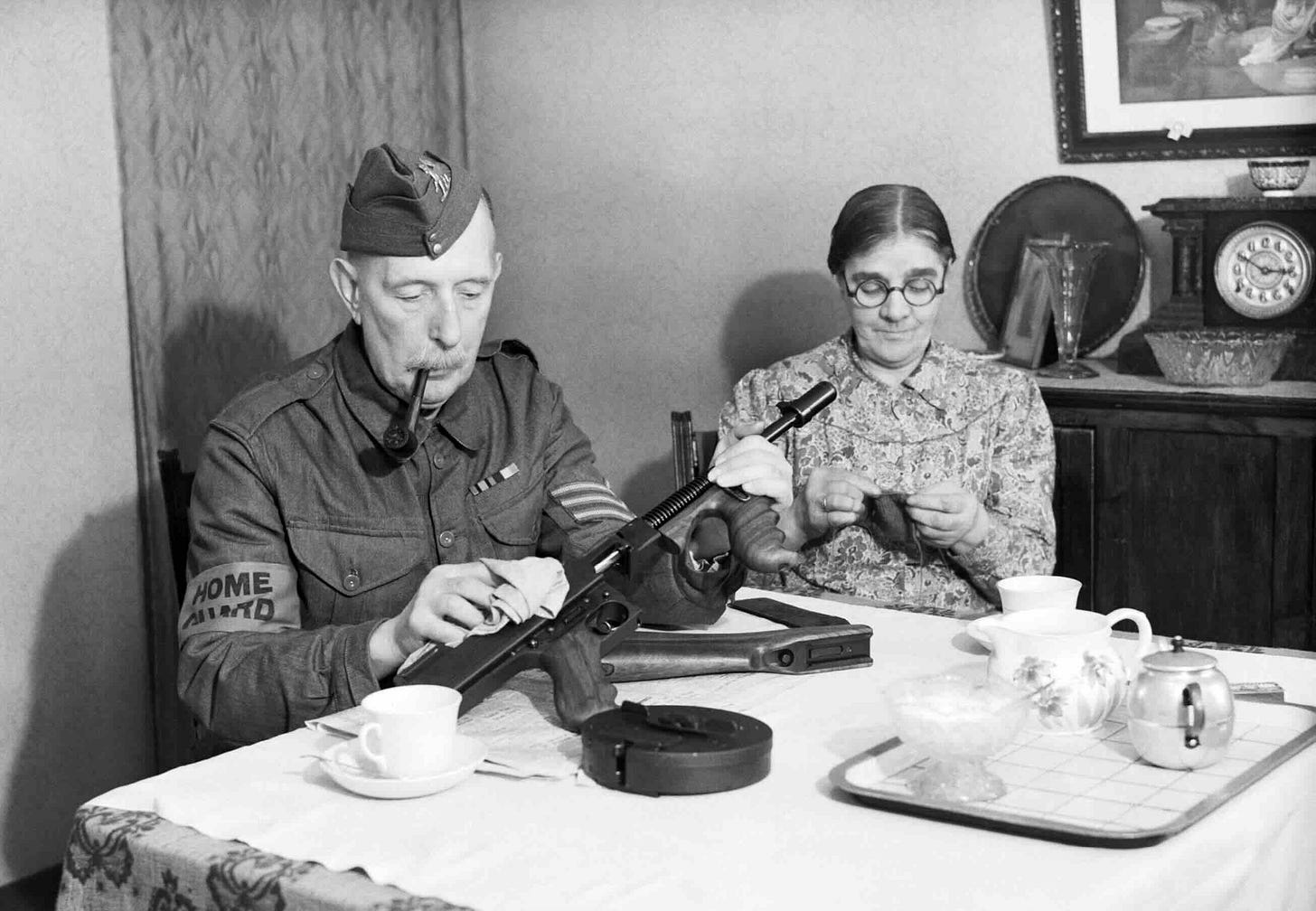
The association of Churchill with the change seemed to signify a new importance for the Home Guard but carried the risk of making Churchill ever-sensitive to its demands. Churchill’s faith in the Home Guard as a morale-booster and unifying force was demonstrated in 1942 when Lieutenant General Morgan saw Yorkshire miners who had been on strike all week attend for weekend Home Guard exercises.
The government was quick to establish that the Home Guard had the legal status of being part of the armed forces of the Crown, to counter the furious Nazi accusation that the LDV were ‘francs-tireurs’. ‘The British government is committing the worst crime of all. Evidently it permits open preparation for the formation of murder bands.’
But, as with the VTC in 1914, the War Office was wary of any suggestion that the LDV had the same status as the regular army. The supplementary instructions issued on 18 May ordered ‘There will be no officers nor non-commissioned officers in the ordinary Army sense of these terms’. Rather than commissions coming from the King and the War Office, senior officers were appointed by tire Lords Lieutenant and they in turn appointed more junior officers. It had its own system of rank and although section and squad commanders (NCOs) had the normal army chevrons, officers could not use the normal ‘pips’ .
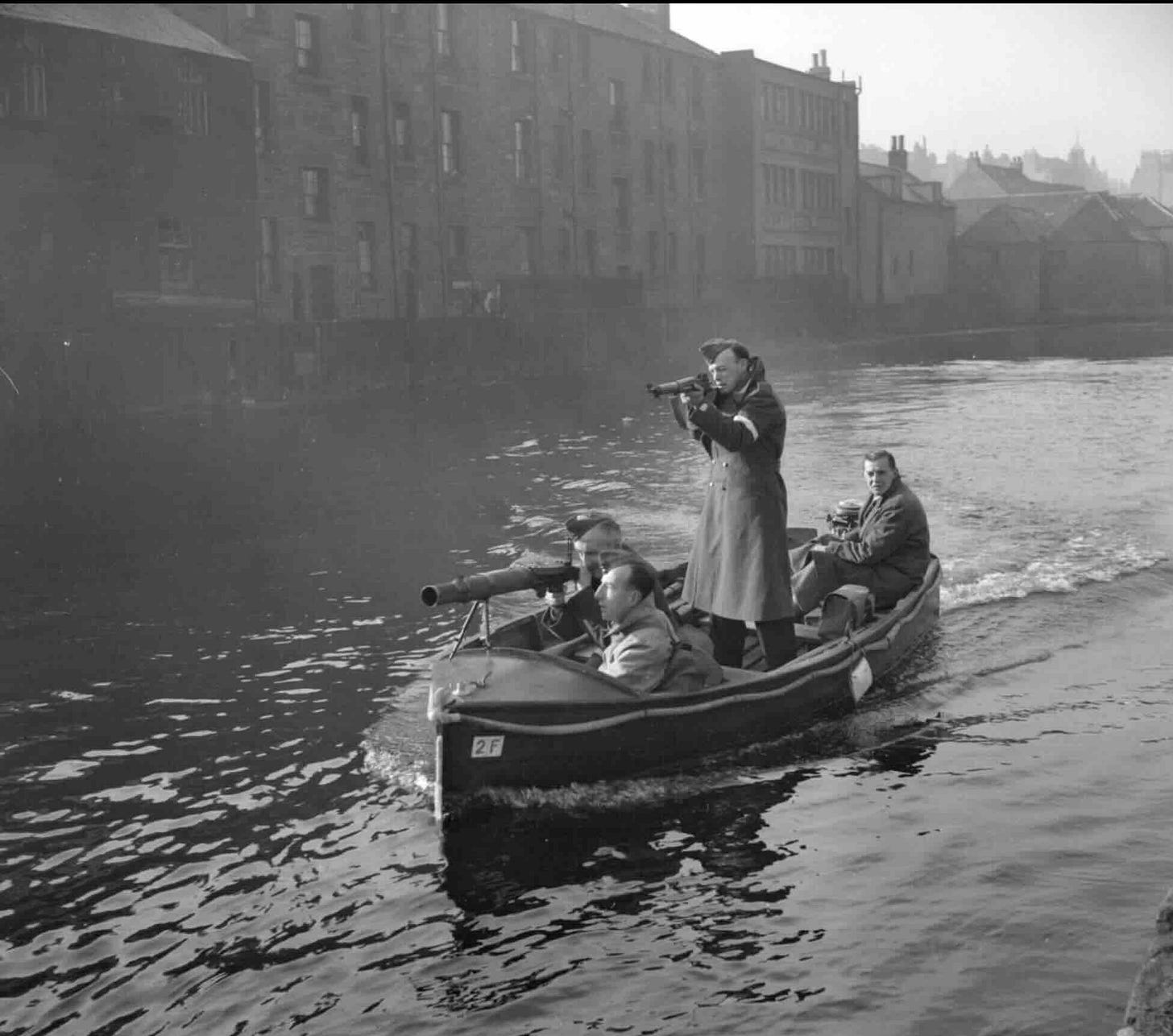
© Malcolm Atkin 2019, 'To The Last Man - The Home Guard in War and Popular Culture'. Reproduced courtesy of Pen & Sword Publishers Ltd.


